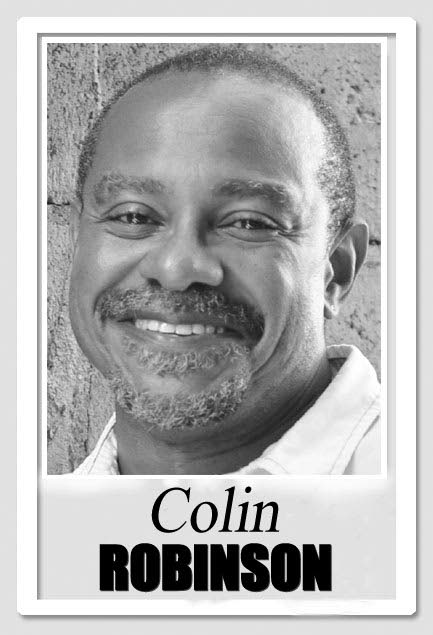Flying inequality

Did you miss my column Sunday? I didn’t finish. I planned to. Ten-hour transatlantic flight. Laptop plugged in at my 777 seat. E-mailed from the sky over wifi.
I rose at four for the Piarco trip. Three for the flight back—when I noticed the airline’s e-mail. The plane was “running late.” I’d miss the Trinidad connection. My flight had been cancelled. Call to rebook.
I hadn’t booked. Last time I’d bought a ticket to somewhere was like 20 years ago—to meet the in-laws, see Ghana, where he’d grown up; then we’d done romantic Paris, where climbing Sacré Coeur’s steps put him in emergency hernia surgery, and authorities refused to extend my stay. Wait, there was Notting Hill Carnival too. But anything else I’d paid for was the Caribbean or US.
I’ve been a beneficiary of the NGO vice of the trips—ten to meetings in Europe, six in Latin America, two southern Africa, as many in the Caribbean. Miles flown on sponsored trips had also made me an élite flyer, those who board first, upgrade to first or business class periodically, and don’t pay for bags. (I left Wade Mark in the gate once on the way to the same meeting.)
I’ve begun to question how the flying vice distorts young leadership, the global economy of trotting activists to add colour more than voice at international convocations. Also, I so want to fly places I actually get to leave the hotel.
My decline in travel—and airlines’ switch to frequent-flyer programmes based not on how far you flew, but how much was paid for your ticket—has landed me back in the back of the plane when I go now.
And what a difference it makes. In-flight comfort and amenities have grown steadily, but radically unequally, with a majority of lower-income, occasional flyers cramped in the rear of modernised vehicles in conditions we’ve come to jokingly term “steerage”—the homeless shelter-like conditions on turn-of-the-century ocean liners for the lowest tier of passengers—behind a shiny “premium economy” section.
I recall when it was a point of pride to travel Bee-Wee over carriers flying the same route. Such patriotism has disappeared generally, certainly its market value for Caribbean Airlines, which replaced it on competitive routes with retaining or returning free bags and food in economy. In its new Medera makeover, however, CAL has already gone the way of other airlines in increasing cabin inequality, offering human-sized legroom and edible food to those able and willing to pay a premium.
Our pride in our plantation culture colours our on-board safety obsession-—more than any other carrier—over open window shades, unbuckled seatbelts during fuelling, folded blankets, cellphone restrictions, and not dozing in an exit row during takeoff—far exceeding any attention to security in our airports. I worry deeply where we’ll take cabin stratification.
Like Gabby Hosein, I grew up in waving-gallery days, when airplanes were wonders, and you dressed up to travel. I’ve come to realise how unglamorously unpleasant modern air travel is. Packing for weight and manhandling, TSA slicing open anything that smells, limiting liquids to 100ml; the belts-hats-shoes off, emptied-pockets, laptops-out, hands-up-pose x-raying ritual and feel-up; dragging bags through never-ending airport halls; recirculated air they don’t heat enough; waiting for soiled toilets you can’t turn around in; lines and lines; extra hours of life one flight sucks up. And the cramped spaces and prettified trays of gruel.
The cheapest economy ticket from Trinidad to Europe means flying four hours west to Miami to catch a connection back east. My flight was an ageing British Airways 747 without a working APU to power air-conditioning on the ground. It had upgraded premium sleeper seats, but zero frills in the 10-seat-wide economy cabin, and legroom that made my tray-table unusable when the seat in front reclined fully. No seatpower, bad movies, and going into a meeting as I landed, all there was to do, after sending back the white rice and meat on its edge called curry, was sleep.
That wasn’t the plan the elderly Jamaican couple behind had, waking me up to ask me to move my seat, then thumping on it, grumbling loudly when I reclined again. Imagining them knitting, gardening or watching TV in a Council flat next day, I refused to yield another degree of seat pitch.
Flying back—I’d checked—on a newer American Airlines plane, I’d have seatpower, wifi, real movies. After 45 minutes on the hotel reception line, they wouldn’t “guarantee” an overnight hotel in Miami, but would send me to JFK on a later flight, for a CAL redeye home.
Still, I settled in for the column, plugged into the universal power port. Endured the lecture from the flight attendant for 11 years (who’s still not purser). Changed seats. It still didn’t work. The laptop died.


Comments
"Flying inequality"